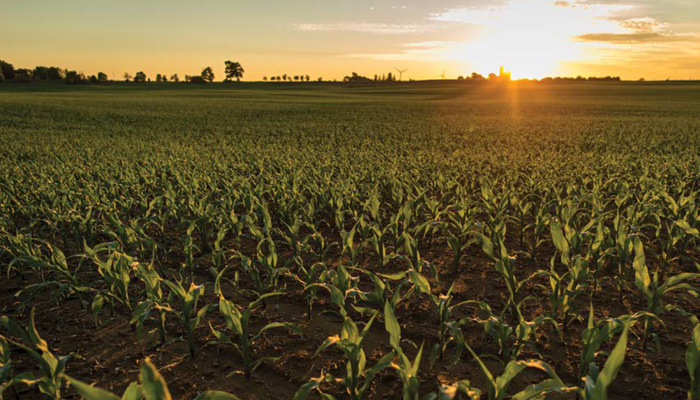Average farmland values in Canada are showing only modest increases for the first half of 2019, according to a review by Farm Credit Canada.
The national average for farmland values fell from a 6.6-per-cent increase in 2018 to a three-per-cent increase in the first half this year. If this increase holds steady for the remainder of this year, it will be part of a five-year trend of softening growth in average farmland values.
“There might be some minor market adjustments along the way, but the days of sharp increases in farmland values have been replaced by more modest growth,” said J.P. Gervais, FCC’s chief agricultural economist.
FCC’s review showed lower increases from 2018 in British Columbia (2.7%), Alberta (1.6%), Saskatchewan (2.9%), Ontario (3.3%) and Quebec (2.8%), while Manitoba (6.2%) showed a slightly higher increase. Publicly reported transactions in four Atlantic provinces have yet to be reviewed and assessed.
Average farmland values have increased every year since 1993; however, increases were more pronounced from 2011 to 2015 in many different regions. In 2015, the average increase was 10 per cent, and since that year, Canada has seen more moderate single-digit increases in average farmland values.
“Now we appear to be moving into a time of cautious buying, where producers are focusing more on improving productivity and building resilience in their operations,” Gervais said.
Most Canadian farms continue to be in a good financial position and the overall farm debt-to-asset ratio remains lower than the 15-year average, so many producers are in a position to purchase land if it’s part of their business plan.
“The balance sheet is still strong, but uncertainty in markets and the fact that farmland values have climbed rapidly in the past may be giving some producers reason to pause,” Gervais said. “Others may have already expanded their operations and are now exploring other strategic investments.”
Changes in commodity prices, uncertainty around global trade and some challenging weather conditions may have also taken some of the steam out of farmland values. Producers can prepare for these unpredictable circumstances by maintaining a risk management plan while remaining focused on the big picture, according to Gervais.
“Demand for Canadian agricultural products is projected to remain strong at home and abroad in 2019-20, so there is a long-term positive future in agriculture,” he said.





